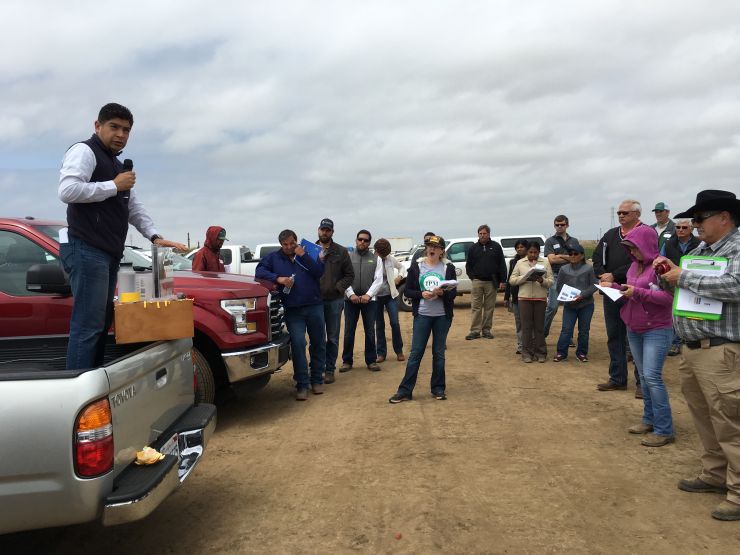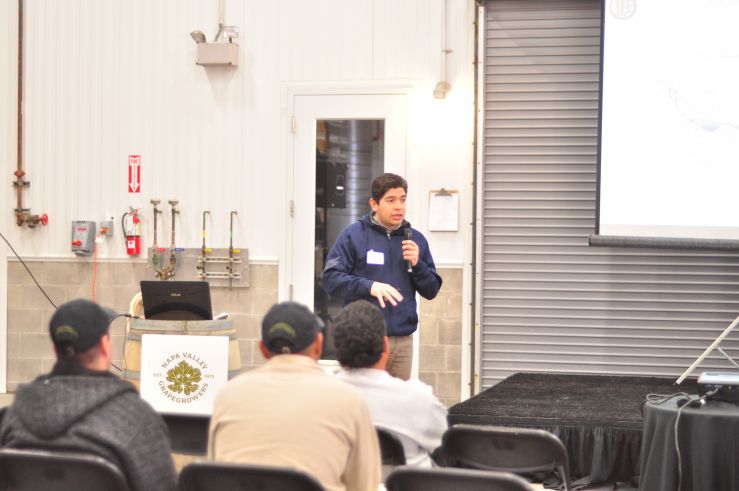Hydrology & Climate Change
What is Hydrology? What is Climate Change? Are they related? This webpage provides a very basic knowledge of what is hydrology, climate change and how these two topics are related, in the context of California. Videos explaining each concept are available here in English and in Spanish. The objective of these videos is to make available the fundamental knowledge regarding Hydrology and Climate Change. I can present these materials in person; I have already done it with audiences varying from 20 up to 140 people! Please contact me (samsandoval@ucdavis.edu) to arrange a presentation, as these presentations can be ideal for training sessions to farmworkers. Other audiences can be: teachers, personnel of water agencies, citizens, decision makers, people in the water supply industry, among others.
Water Cycle in California |
Fundamentals of Hydrology |
| - California's Climate | - Groundwater basics |
| - Drought in California | - Darcy's Law |
| - Fall | - The Bathtub |
| - Winter |
Groundwater Policy |
| - Spring | - SGMA |
| - Summer |
Avoiding Contamination of Groundwater |
| - Irrigation Scheduling
- Presentation, spreadsheet (google, box) |
- Pesticides (12 minutes) - Keep Pesticides out of Water (1 hour) |


Water Cycle in California
This engaging series of videos presents the water cycle in California, exploring the geography, hydrology, and climate, starting with precipitation and ending as water into the sea.
Video #1 - California's Climate
As a mediterranean climate, California faces wet winters and dry summers. This video outlines the main hydrologic processes within the state, discussing the rain shadow effect and atmospheric rivers, while distinguishing the difference between climate and weather.
*climate, weather, mediterranean climate, atmospheric rivers, snow line, rain shadow effect
Video #2 - Drought in California
Recently, California was in a state of severe drought. This video explores the process of identifying a drought in addition to outlining a few of the main components to our water system. As a larger picture discussion, Professor Sandoval Solis describes the effects of climate change on California's hydrology.
*drought, replenishment, aquifers, reservoirs, snowmelt, climate change
Video #3 - California: The Bathtub
Due to the incredible mountain ranges and valleys within California, one can compare our state to a bathtub. This video clarifies the varying hydrologic classifications throughout California and how these play a key role in the water cycle.
*rainfall runoff system, evapotranspiration (ET), aquifer storage, rainfall runoff aquifer system, outlets
Video #4 - The Water Cycle in California: Fall
Each season plays an important role in moving water throughout the state, replenishing our environment, and serving the demands of urban and agricultural users. During fall, the river recharges the aquifers, or underground storage of ground water.
*losing river
Video #5 - The Water Cycle in California: Winter
As rain begins to fall, our aquifers and rivers begin to recharge, or refill.
*infiltration rate, rain intensity, surface runoff
Video #6 - The Water Cycle in California: Spring
As spring approaches and the temperatures start to rise, snow begins to melt and provide a fresh supply of water. With this downhill water movement, sediment tags along creating an alluvial deposit lower in elevation. Due to the high porosity of the deposited sediment, these areas can serve as key opportunities for groundwater recharge.
*snow melt, alluvial fans, groundwater recharge
Video #7 - The Water Cycle in California: Summer
During summer, agriculture and recreational activities demand large quantities of water. Where does this water come from?? Our aquifers! Since the aquifer or groundwater storage levels are higher than our rivers, water begins to flow back into the river.
*gaining river
Video #8 - Darcy's Law
It can become easy to forget the complex network of science happening under our feet at any given time. Darcy's Law allows us to understand the speed water travels as a combination of soil texture, porosity, and slope.
* hydraulic gradient, hydraulic conductivity, Darcy's Law
Video #9 - Sustainable Groundwater Management Act {SGMA}
Due to its importance for meeting agricultural and urban needs, groundwater is a valuable natural resource and therefore is carefully monitored. SGMA serves as a locally controlled tool in managing California's groundwater. Watch below to find out the purpose, principles, and participation SGMA allows.
*SGMA, drought, groundwater overdraft, saltwater intrusion, land subsidence, GSA, GSP
Video #10 - Groundwater
Groundwater is a critically important concept for hydrology. As an interconnected system, groundwater is affected by the surface water, river, and the many users who use wells to pump water to the surface.
*aquifer, river, groundwater, wells, piezometers, confined aquifers, unconfined aquifers
Video #11- Pesticides
Along with the 400+ commodities produced annually in California, a variety of pest and disease treatments are utilized-- some ending up in our water system. With a few minor behavioral adjustments, farmers and citizens can ensure our water supply remains clean and secure.
*Integrated Pest Management (IPM), biological control, pesticides, surface runoff




